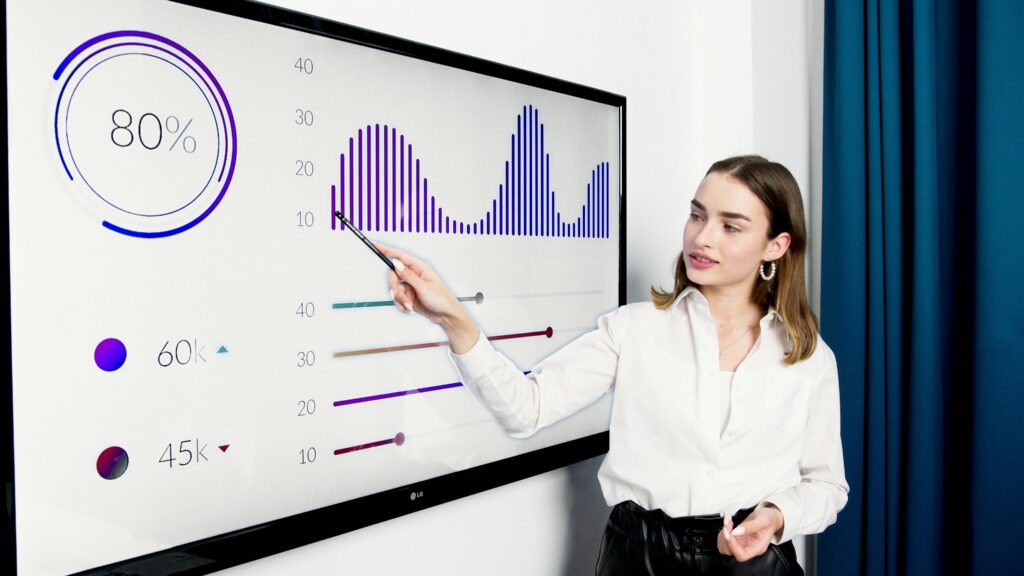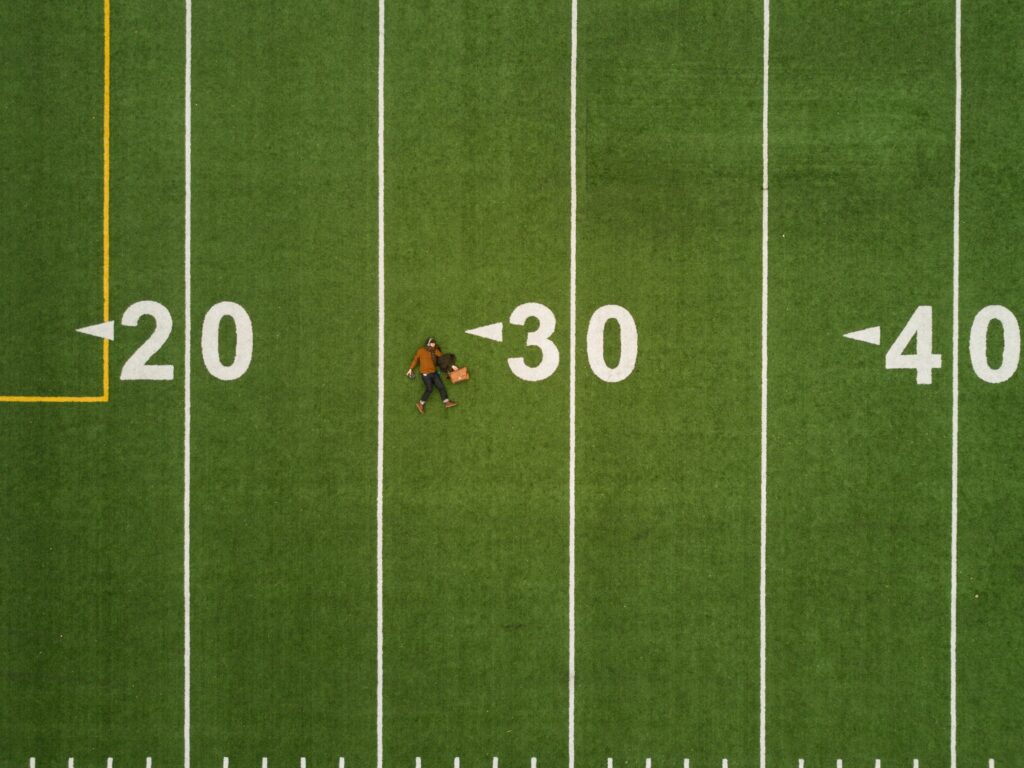Transforming Athletic Performance and Fan Experience

The integration of technology, analytics, and artificial intelligence (AI) in sports has revolutionized how athletes train, compete, and recover, while simultaneously transforming fan experiences and business operations. From wearable sensors tracking player movements to AI-powered performance predictions, modern sports technology has become an indispensable tool for teams, athletes, coaches, and organizations worldwide.
This comprehensive guide explores the multifaceted applications of sports technology, data analytics, and AI systems across various sporting disciplines, providing insights into implementation strategies, benefits, challenges, and future trends that are shaping the athletic landscape.
The Evolution of Sports Technology
Historical Context and Digital Transformation
Sports technology has evolved dramatically from basic stopwatches and scoreboards to sophisticated AI-driven analytics platforms. The digital transformation in sports began with simple statistical tracking and has progressed to real-time biometric monitoring, predictive modeling, and automated decision-making systems.
Early adopters like professional baseball teams pioneered sports analytics through sabermetrics, demonstrating how data-driven insights could provide competitive advantages. Today, virtually every professional sport leverages advanced technology solutions, from GPS tracking in soccer to biomechanical analysis in tennis.
Key Technological Milestones

The introduction of high-speed cameras, motion capture systems, and sensor technology marked significant milestones in sports innovation. Video analysis software enabled frame-by-frame performance evaluation, while GPS tracking devices provided unprecedented insights into player positioning and movement patterns.
The emergence of machine learning algorithms and AI systems has further accelerated sports technology adoption, enabling real-time data processing and predictive analytics that were previously impossible with traditional methods.
Core Technologies in Modern Sports
Wearable Technology and IoT Devices
Wearable technology represents one of the most visible applications of sports tech innovation. Smart fitness trackers, heart rate monitors, and GPS-enabled devices collect continuous physiological and performance data during training and competition.
Advanced wearables now incorporate multiple sensors measuring acceleration, gyroscopic movement, temperature, and even hydration levels. These Internet of Things (IoT) devices create comprehensive athlete profiles that inform training decisions and injury prevention strategies.
Professional teams utilize custom wearable solutions that provide real-time feedback to coaching staff. For example, NBA teams use player tracking systems that monitor movement efficiency, shot mechanics, and fatigue indicators throughout games and practices.
Video Analysis and Computer Vision
Computer vision technology has transformed video analysis from manual observation to automated pattern recognition. AI-powered systems can analyze thousands of hours of game footage, identifying tactical patterns, player tendencies, and performance indicators with remarkable accuracy.
Modern video analysis platforms integrate multiple camera angles, providing 360-degree perspectives of athletic performance. Machine learning algorithms automatically tag events, track player movements, and generate detailed performance reports that would require hundreds of hours of manual analysis.
These systems excel at identifying subtle technique variations that human observers might miss, making them invaluable for skill development and tactical preparation.
Sensor Technology and Data Collection
Advanced sensor networks deployed in sporting venues collect vast amounts of environmental and performance data. Court sensors in tennis measure ball speed, spin rate, and trajectory, while swimming pool sensors track stroke efficiency and lap times.
Smart equipment embedded with sensors provides immediate feedback on technique and performance. Golf clubs with built-in accelerometers analyze swing mechanics, while smart basketballs measure shooting accuracy and ball handling skills.
The proliferation of sensor technology has created unprecedented data collection opportunities, enabling comprehensive performance analysis across all aspects of athletic competition.
Data Analytics in Sports Performance

Performance Metrics and KPIs
Sports analytics relies on key performance indicators (KPIs) that quantify athletic achievement and identify improvement opportunities. Traditional statistics like scoring averages and win-loss records have expanded to include advanced metrics such as player efficiency ratings, expected goals, and defensive impact measurements.
Modern analytics platforms track hundreds of performance variables simultaneously, creating multidimensional athlete profiles. These comprehensive datasets enable coaches and analysts to identify performance patterns, optimize training loads, and develop targeted improvement strategies.
The selection and interpretation of appropriate KPIs vary significantly across sports, requiring specialized knowledge of sport-specific performance factors and competitive dynamics.
Real-Time Data Processing

Real-time analytics capabilities have transformed in-game decision making and tactical adjustments. Coaches now receive immediate feedback on player performance, team statistics, and opponent tendencies through sideline tablets and communication systems.
Advanced analytics platforms process streaming data from multiple sources, providing instant insights that inform substitution decisions, tactical changes, and strategic adjustments during competition.
The ability to analyze data in real-time has created new coaching roles and specialized positions focused on in-game analytics and tactical optimization.
Predictive Analytics and Forecasting
Predictive analytics models use historical data and machine learning algorithms to forecast future performance, injury risks, and competitive outcomes. These systems analyze complex relationships between training loads, recovery patterns, and performance indicators to optimize athlete preparation.
Injury prediction models have become particularly valuable, identifying athletes at elevated risk based on biomechanical data, training history, and physiological markers. Early intervention strategies based on predictive insights can prevent injuries and extend athletic careers.
Game outcome predictions and performance forecasting help teams make strategic decisions regarding player development, trade negotiations, and competitive preparation.
Artificial Intelligence Applications in Sports
Machine Learning for Performance Analysis
Machine learning algorithms excel at identifying complex patterns in sports data that traditional statistical methods cannot detect. These systems analyze vast datasets to uncover hidden relationships between training variables, performance outcomes, and competitive success.
Supervised learning models predict performance based on historical data, while unsupervised learning identifies previously unknown performance patterns and athlete classifications. Deep learning networks process complex data types including video, audio, and sensor streams to generate comprehensive performance insights.
Natural language processing (NLP) systems analyze media coverage, social media sentiment, and scouting reports to provide additional context for performance evaluation and team management decisions.
Computer Vision for Game Analysis
AI-powered computer vision systems automatically analyze game footage, tracking player movements, identifying tactical formations, and measuring performance metrics without human intervention. These systems process multiple video streams simultaneously, creating detailed spatial and temporal analysis of competitive events.
Object detection algorithms identify players, equipment, and field boundaries, while pose estimation systems analyze body positioning and movement mechanics. Action recognition models classify specific events and behaviors, enabling automated scouting and performance evaluation.
Advanced computer vision platforms can analyze opponent tendencies, identify tactical vulnerabilities, and generate detailed scouting reports that inform game preparation strategies.
Natural Language Processing for Sports Intelligence
NLP systems process vast amounts of text-based sports information, including news articles, social media posts, injury reports, and scouting notes. These systems extract relevant insights, identify trends, and generate automated reports that supplement traditional analysis methods.
Sentiment analysis tools monitor public opinion, fan engagement, and media coverage, providing valuable feedback for marketing and public relations strategies. Automated content generation systems create game summaries, player profiles, and statistical reports.
Voice recognition and analysis systems evaluate coaching communication patterns, identifying effective leadership styles and communication strategies that correlate with team success.
Implementation Strategies for Sports Organizations
Technology Infrastructure Requirements
Successful sports technology implementation requires robust infrastructure supporting data collection, processing, and analysis capabilities. Organizations must invest in high-speed networks, cloud computing resources, and specialized software platforms that can handle large volumes of real-time data.
Data storage and security considerations are paramount, particularly when handling sensitive athlete health information and competitive intelligence. Scalable architecture designs accommodate growing data volumes and expanding analytical capabilities.
Integration capabilities ensure seamless communication between different technology systems, enabling comprehensive data analysis and unified reporting platforms.
Staff Training and Change Management
Technology adoption requires comprehensive training programs that ensure staff can effectively utilize new systems and interpret analytical insights. Resistance to change represents a significant implementation challenge, particularly among traditional coaching staff who may prefer intuitive decision-making over data-driven approaches.
Successful organizations develop gradual implementation strategies that demonstrate technology value while respecting existing expertise and decision-making processes. Hybrid approaches that combine traditional coaching wisdom with analytical insights often achieve the best results.
Ongoing education programs keep staff current with evolving technology capabilities and emerging analytical techniques.
Budget Considerations and ROI
Sports technology investments require careful cost-benefit analysis considering both immediate implementation costs and long-term operational expenses. Organizations must evaluate hardware costs, software licensing fees, staff training expenses, and ongoing maintenance requirements.
Return on investment (ROI) calculations should consider performance improvements, injury reduction benefits, fan engagement enhancements, and competitive advantages gained through technology adoption.
Phased implementation approaches allow organizations to test technology effectiveness and build internal capabilities before making larger investments.
Benefits of Sports Technology Integration
Enhanced Athletic Performance

Technology integration enables precise performance monitoring and optimization strategies that improve athletic achievement. Data-driven training programs maximize efficiency while minimizing injury risks through personalized load management and recovery protocols.
Real-time feedback systems help athletes make immediate technique adjustments, accelerating skill development and performance improvement. Biomechanical analysis identifies movement inefficiencies and provides targeted correction strategies.
Performance tracking over time enables coaches to identify optimal training progressions and competition preparation strategies for individual athletes.
Improved Fan Engagement
Sports technology enhances fan experiences through interactive applications, augmented reality features, and personalized content delivery. Real-time statistics and player tracking information provide deeper engagement opportunities during live events.
Social media integration and fan analytics help organizations understand audience preferences and develop targeted marketing campaigns. Virtual and augmented reality technologies create immersive experiences that extend beyond traditional viewing.
Mobile applications provide fans with access to exclusive content, player statistics, and interactive features that enhance their connection to teams and athletes.
Injury Prevention and Health Monitoring
Advanced monitoring systems track athlete health indicators and identify potential injury risks before problems develop. Biomechanical analysis reveals movement patterns that may lead to overuse injuries or acute trauma.
Load management protocols based on physiological data help prevent fatigue-related injuries and optimize recovery periods. Sleep monitoring and nutrition tracking provide comprehensive health insights that inform training decisions.
Early intervention strategies based on predictive health models can extend athletic careers and reduce healthcare costs for sports organizations.
Strategic Decision Making
Data analytics provide objective insights that inform strategic decisions regarding player acquisitions, tactical preparations, and competitive strategies. Performance predictions help teams evaluate potential trades and draft selections.
Opponent analysis systems identify tactical vulnerabilities and strategic opportunities that inform game planning and preparation. Historical performance data guides long-term strategic planning and organizational development.
Financial analytics help organizations optimize budget allocations and evaluate the cost-effectiveness of various programs and initiatives.
Sport-Specific Applications
Football (Soccer) Analytics

Soccer analytics focus on player positioning, passing networks, and tactical formations that influence game outcomes. GPS tracking systems monitor player workloads, sprint distances, and movement patterns throughout matches and training sessions.
Expected goals (xG) models predict scoring probabilities based on shot locations and game situations, providing insights into offensive efficiency and defensive effectiveness. Player tracking data reveals pressing intensity, defensive positioning, and attacking movement patterns.
Video analysis systems automatically identify set piece situations, tactical formations, and individual player actions that inform scouting and tactical preparation.
Basketball Performance Technology
Basketball technology emphasizes shooting analysis, player tracking, and defensive metrics that correlate with team success. SportVU camera systems track every player movement and ball position, generating comprehensive statistical datasets.
Shooting analysis platforms measure release angle, ball rotation, and shooting consistency, providing feedback for skill development. Player load monitoring prevents overuse injuries common in high-intensity basketball competition.
Advanced metrics like defensive rating, player efficiency rating, and win shares provide objective evaluation criteria for player performance and team construction.
Baseball Sabermetrics and Analytics
Baseball pioneered sports analytics through sabermetrics, developing sophisticated statistical models that evaluate player performance and predict future success. Pitch tracking systems measure velocity, spin rate, and movement patterns for every pitch thrown.
Defensive positioning analytics optimize fielder placement based on batter tendencies and situational factors. Launch angle and exit velocity measurements provide insights into hitting mechanics and offensive performance.
Player development systems track minor league performance and project major league success probabilities, informing draft selections and player acquisitions.
Tennis Technology Solutions
Tennis technology focuses on stroke analysis, court positioning, and physical conditioning that influence competitive success. High-speed cameras capture serve mechanics and stroke techniques, providing detailed biomechanical feedback.
Court sensors measure ball speed, spin, and placement accuracy, while player tracking systems monitor court coverage and movement efficiency. Heart rate and GPS monitoring provide insights into physical conditioning and match intensity.
Video analysis platforms automatically identify stroke types, court positioning, and tactical patterns that inform coaching decisions and opponent preparation.
Challenges and Limitations
Data Privacy and Security Concerns
Sports technology implementation raises significant privacy concerns regarding athlete health data, performance information, and personal details. Organizations must comply with data protection regulations while maintaining the security of sensitive information.
Athlete consent and data ownership rights require careful consideration, particularly when sharing information with third parties or using data for commercial purposes. Cybersecurity measures must protect against data breaches and unauthorized access.
International competitions and multi-organizational partnerships complicate data sharing agreements and privacy protection protocols.
Technology Costs and Accessibility
High implementation costs limit technology access for smaller organizations and developing sports programs. Advanced analytics platforms, sensor networks, and AI systems require significant financial investments that may be prohibitive for amateur and youth sports.
Ongoing operational costs including software licensing, hardware maintenance, and staff training create budget pressures that limit technology adoption. Inequality in technology access may create competitive advantages that favor well-funded organizations.
Cost-effective solutions and scaled implementation approaches can help democratize sports technology access across different organizational levels.
Over-reliance on Data vs. Human Intuition
Excessive dependence on data analytics may diminish the importance of coaching intuition, experience, and emotional intelligence in athletic development. Balancing analytical insights with human judgment requires careful consideration and ongoing evaluation.
Data quality issues and analytical limitations can lead to incorrect conclusions and poor decision-making if not properly understood and contextualized. Human interpretation and validation remain essential components of effective sports analytics.
Athletes and coaches must maintain the ability to make decisions based on situational awareness and competitive instincts that may not be captured in analytical models.
Technical Complexity and User Adoption
Complex technology systems may overwhelm users who lack technical expertise, limiting adoption and effectiveness. User interface design and training programs must accommodate varying levels of technical proficiency.
System reliability and performance issues can undermine confidence in technology solutions, particularly during critical competitive situations. Backup procedures and manual alternatives ensure continuity when technology systems fail.
Change management strategies must address resistance to technology adoption while demonstrating clear value propositions for different user groups.
Future Trends and Innovations
Emerging Technologies in Sports
Virtual and augmented reality technologies are creating new training environments and fan experience opportunities. VR systems enable athletes to practice in simulated game situations, while AR applications provide real-time information overlay during competition.
5G network capabilities will enable faster data transmission and more sophisticated real-time analytics. Edge computing solutions will process data closer to collection points, reducing latency and improving response times.
Blockchain technology may revolutionize sports data management, athlete contracts, and fan engagement through secure, transparent transaction systems.
Advanced AI and Machine Learning
Deep learning models will become more sophisticated in analyzing complex sports scenarios and predicting outcomes with greater accuracy. Reinforcement learning systems may optimize training protocols and tactical strategies through simulated competition.
Automated coaching systems powered by AI may provide personalized training recommendations and real-time performance feedback. Natural language processing will enable more intuitive interaction with analytical systems.
Federated learning approaches will enable organizations to collaborate on AI model development while protecting proprietary data and maintaining competitive advantages.
Integration with Smart Cities and IoT
Sports facilities will integrate with smart city infrastructure, optimizing traffic management, energy consumption, and public safety during events. IoT networks will create seamless connectivity between venues, transportation systems, and fan services.
Environmental monitoring systems will track air quality, temperature, and weather conditions that influence athletic performance and fan comfort. Automated facility management will optimize energy usage and maintenance schedules.
Connected fan experiences will extend beyond venues through mobile applications, social media integration, and personalized content delivery systems.
Personalized Fan Experiences
AI-powered recommendation systems will deliver personalized content, merchandise suggestions, and event recommendations based on individual fan preferences and behavior patterns. Dynamic pricing algorithms will optimize ticket sales and concession revenue.
Biometric fan identification systems may enable seamless venue entry, personalized services, and enhanced security measures. Social media integration will create community experiences that connect fans worldwide.
Virtual attendance options will provide remote fans with immersive experiences that rival in-person participation through advanced broadcasting technology and interactive features.
Best Practices for Implementation
Strategic Planning and Goal Setting
Successful technology implementation requires clear strategic objectives aligned with organizational goals and competitive priorities. Implementation roadmaps should identify specific use cases, success metrics, and timeline expectations.
Stakeholder engagement ensures that technology solutions address real user needs and organizational challenges. Regular assessment and adjustment of implementation strategies accommodate changing requirements and emerging opportunities.
Pilot programs enable organizations to test technology effectiveness and build internal capabilities before large-scale deployment.
Vendor Selection and Partnership Management
Technology vendor evaluation should consider not only product capabilities but also integration requirements, support services, and long-term partnership potential. Reference checks and proof-of-concept projects validate vendor claims and solution effectiveness.
Service level agreements define performance expectations, support requirements, and resolution procedures for technical issues. Regular vendor reviews ensure ongoing satisfaction and identify improvement opportunities.
Strategic partnerships with technology providers may provide access to cutting-edge innovations and development resources that enhance competitive advantages.
Continuous Learning and Adaptation
Sports technology evolves rapidly, requiring organizations to maintain current knowledge of emerging trends and capabilities. Professional development programs keep staff informed about new analytical techniques and technology applications.
Industry collaboration through conferences, workshops, and professional organizations facilitates knowledge sharing and best practice development. Academic partnerships may provide access to research insights and experimental technologies.
Feedback loops ensure that technology implementations continue to meet evolving user needs and organizational objectives.
Conclusion
The integration of technology, analytics, and AI in sports represents a fundamental transformation in how athletic performance is measured, optimized, and experienced. From wearable sensors monitoring athlete health to AI systems predicting game outcomes, these innovations have become essential tools for competitive success and fan engagement.
Successful implementation requires careful planning, appropriate resource allocation, and ongoing commitment to learning and adaptation. Organizations that embrace these technologies while maintaining balance with human expertise and intuition will achieve the greatest benefits from their investments.
As technology continues to evolve, sports organizations must remain agile and forward-thinking in their approach to innovation. The future of sports will be increasingly data-driven, but human creativity, passion, and athletic excellence will remain at the heart of competitive achievement.
The transformation of sports through technology is just beginning, with exciting possibilities ahead for athletes, coaches, fans, and organizations willing to embrace the digital revolution in athletic competition and entertainment.
This comprehensive guide provides foundational knowledge for implementing technology, analytics, and AI solutions in sports organizations of all sizes. Regular updates and ongoing education ensure continued relevance as the field continues to evolve rapidly.
